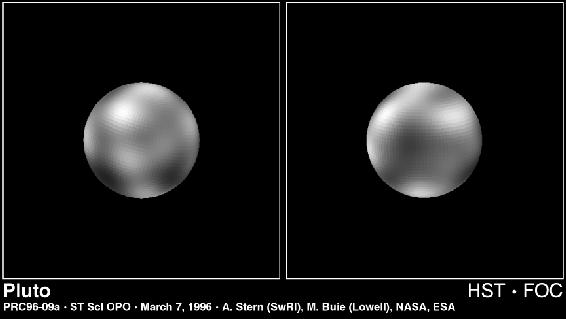

The new images of Pluto's surface could positively impact the proposed Pluto flyby mission early in the next century.
"Hubble is providing the first, tantalizing glimpse of what Pluto will be like when we get there. Hubble has brought Pluto from a fuzzy, distant dot of light, to a world which we can begin to map, and watch for surface changes. Hubble's view of the tiny, distant Pluto is reminiscent of looking at Mars through a small telescope," said Stern. "These results and the maps we constructed from them are much better than I ever hoped for. It's fantastic," said Buie.
Trafton says that the new HST images are confirming Pluto's individuality, rather than its identity as a twin of Triton. The images reveal much more surface variety than other icy objects in the outer solar system, and show that Pluto is a complex object with more large-scale contrast than any planet, except Earth.
Slightly better images of Pluto will be obtained from the Advanced Camera, which is should be installed on Hubble in 1999. This will offer the best view of Pluto until space probes such as the Pluto flyby mission eventually make the long journey across the solar system.

 |
 |